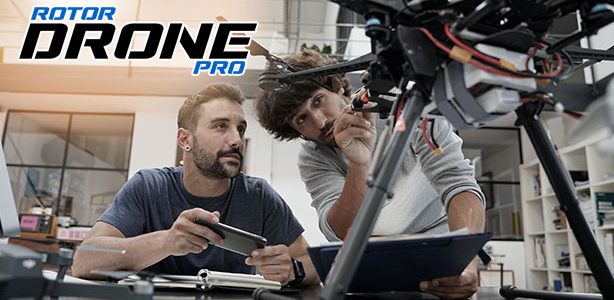When first starting out as a commercial unmanned aerial vehicle (UAV) operator, many business owners and pilots do not know where to begin to locate an insurance provider. Many “standard” insurance companies do not insure—and may specifically exclude from their policies—an unmanned aircraft system (UAS). To properly insure your commercial operations, start by contacting aviation-specific brokers, who quote, sell, and service aviation-specific insurance policies. You may be tempted to use a broker that you already have a relationship with, such as the one that handles your homeowner’s, auto, or business policy, but these types of brokers are generally not well versed on the complexities of aviation insurance. Furthermore, they are probably not going to be appointed with any aviation insurance companies. This is not an insult to non-aviation insurance brokers; it’s just that they specialize in coverage that is typically not applicable to aviation. Also, it is notoriously difficult for agents/brokers to get appointed with aviation-insurance companies. Even if you can find a non-aviation insurance broker that can obtain a quote from an aviation-specific insurance company, he or she will most likely have to contact an aviation-specific insurance broker to quote, sell, and service the policy, and this may contribute to mistakes, longer wait times (on changes, Certificates of Insurance, and answers to questions), and an overall inefficient insurance program. After you find a trustworthy broker, he or she will locate the best aviation insurance company based on your desired coverage, geographical area of operation, use of the UAS, and premium.
Types of Coverage Note: Coverage varies widely from company to company. This is a general outline of coverage.
Liability in aviation. The base policy is liability only, and this coverage must be purchased prior to adding any other type of coverage. Think about it like the foundation of the UAS insurance policy. This coverage will protect the business from property-damage and bodily-injury claims that may arise through the commercial operation of a UAS. Typically, liability limits start at $500,000 and can usually be negotiated to as high as is required by the business and its clients (limits as high as $10,000,000 per occurrence are not unheard of in UAS insurance). Each company, however, may or may not offer you certain limits based on its underwriting criteria. It is often argued that liability is the biggest concern of any business, especially one that operates aircraft.
Hull. Generally, the next coverage to consider after liability is “hull” coverage. Hull coverage’s purpose is protecting the business from the financial cost of any physical damage that may occur to its UAS. Typically, this coverage is quoted on an “agreed value” basis. The business owner, his or her broker, and the insurance company will agree upon a value and quote the UAS based on that valuation. It is important, however, to make sure that the value of the UAS is accurate. If a UAS was purchased in early 2015 for $1,500, its market value is most likely not the same at the beginning of 2017. Not keeping up with the declining value of your UAS will lead to overpaying for insurance and problems in the claims process. If your UAS is totaled, the insurance company will cut you a check for its insured value minus any applicable deductibles (deductibles on a UAS policy are usually between 5 and 10 percent of the insured value of the aircraft). Some companies, however, will adjust the value of the aircraft to reflect the current market price (for example, you cannot insure a DJI Phantom 3 for $6,000 and expect to get that amount in the event of a claim). This is another reason why it is important to have the stated value be in line with the current market price of your UAV.
Payload. Depending on the type of UAS that is operated, another option to consider is payload coverage. If a business owns multiple cameras or sensors that are designed to be carried by a UAS, payload coverage is very important. This coverage is similar to hull coverage except that it is specifically designed for payload equipment. This coverage is designed to protect the insured from any physical-damage losses to a scheduled payload. Again, a similar deductible of between 5 and 10 percent of the insured value of the equipment will be applied to payload items. For this type of coverage, you do not simply want to “lump” the value of the payload in with the hull coverage on the UAS; these items should be scheduled separately. Just as with hull coverage, it is important to accurately insure the value of the payload.
An example of how the scheduling should look on the quote/binder/policy is provided below:
Aircraft Schedule
2017 DJI Inspire 2—S/N 0DDX091356F9—$3,000 (insured value)
2017 DJI Zenmuse X5S—S/N 0DDP4987321—$1,899 (insured value)
2017 DJI Zenmuse X5R—S/N 0DDF2345697—$3,199 (insured value)
Ground equipment. Ground equipment such as dedicated ground stations, laptops, tablets, cases, radios, and other items associated with an insured aircraft can be added to insurance policies. Similar rates and deductibles to the hull and payload coverage should apply to the ground equipment. Non-Owned Coverage There are a few types of non-owned coverage that can be added to a UAS insurance policy. Non-owned coverage is crucial for companies that fly UAS or payloads that are not owned by the policyholder. The first is “non-owned UAS liability coverage.” This is designed for a business that operates UAVs that are not owned, or leased for a significant amount of time, by the insured business. Non-owned UAS liability coverage will protect the business from any claims of property damage or bodily injury that may arise from its use of a UAS you do not own (but not physical damage to the non-owned UAV itself). If non-owned UAS liability coverage is added to a policy, it typically follows the liability limit of the owned aircraft. If your business is ever asked to operate a UAS that is owned by someone else, non-owned liability coverage is something to consider. A second non-owned UAS coverage to consider is “non-owned UAS hull coverage.” This coverage, just like the “owned” hull coverage, is coverage for physical damage to the non-owned UAS operated by the named insured, who generally selects a limit for this coverage. So if you generally operate a 2017 DJI Inspire 2 equipped with a DJI Zenmuse X5S camera that you do not own, you should consider adding non-owned hull coverage in the amount of $4,899 ($3,000 for the Inspire 2 and $1,899 for the DJI Zenmuse X5S).
A third non-owned coverage to consider is nonowned payload coverage. This coverage works in a similar fashion to the “owned” payload and non-owned hull coverage described above. If you operate a 2016 Freefly Alta that you own and you commonly carry RED cinematic cameras owned by the production companies that hire you, non-owned payload coverage is a must (these cameras, equipped with certain lenses, can sometimes be valued at $100,000!). Likewise, if you perform aerial inspections using expensive sensors you don’t own, non-owned payload coverage is, again, crucial. Some insurance companies add this coverage on a case-by-case basis. In that situation, the insurance company will allow you to set a coverage limit and add a “blanket” endorsement to the policy.
Personal Injury
Personal-injury coverage is a relatively new offering in the UAS insurance world. This type of coverage is for libel, slander, violation of privacy, and copyright infringement. The most important portion of this coverage is the violation-of-privacy language. With the negative portrayal of UAS in the media and the population’s irrational fear of flying cameras, it is a good idea to consider this type of coverage. Looking Forward As we all know, the regulations, technology, and business needs of the commercial UAS industry are rapidly evolving. As the insurance providers modify their offerings to keep pace with these changes, keep an eye out for new types of UAV insurance coverage. Aviation insurance companies are not mind readers, so if you have a unique, out-of-the-ordinary use for your UAS, please inform your aviation-insurance broker. If acoverage does not exist for your desired use, your insurance carrier may be able to design, or specifically negotiate, a policy that will fit your needs.
BY JOE ERNSTER



















